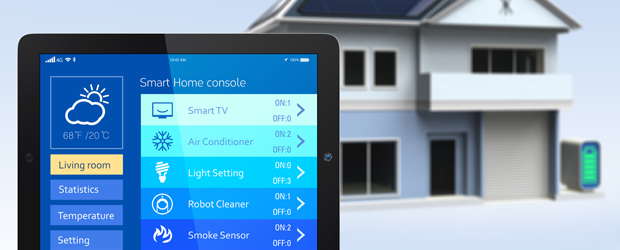

.jpg)
Yogi Schulz
@itworldca
Published: January 12th, 2015
Here’s a summary of what home owners, including IT professionals who may want to add some more gear to their homes, can choose from
The 2015 International Consumer Electronics Show (CES) included dozens of displays of the latest home automation devices. Home automation appears to be a practical, here-and-now example of the Internet of Things that is receiving so much media and analyst attention.
Perhaps the steady decreases in hardware cost and the ubiquity of smartphones will finally lead to the rapid adoption the vendors in this space have been dreaming about for years. Apple’s HomeKit framework may kick start this market just as Apple has previously accelerated adoption in other markets.
Today very few homes operate with capabilities beyond security with a monitoring service and a locally-operated thermostat that can change the temperature at preset times. Here’s a summary of what home owners, including IT professionals who may want to add some more gear to their homes, can choose from.
System capabilities
The smart devices on display at CES enable the remote operation of locks, lights, thermostats and blinds. Some devices can raise an alarm based on detecting fire, smoke, a water leak or a natural gas leak. Some controllers are capable of more sophisticated actions such as raising the interior temperature in anticipation of the owner’s return based on GPS proximity. Other controllers can raise or lower the blinds in response to the absence or presence of sunlight. The most sophisticated systems also monitor and perhaps operate home appliances such as the oven, the washing machine and the refrigerator.
Operation
As you might expect every vendor offers a smartphone app to turn devices on or off, set temperature ranges and schedule events. Some vendors offer a wall-mounted control panel. One vendor displays a control panel image on one of the televisions in the home and uses yet another TV remote for operation.
The smartphone apps alert home owners to motion detectors sensing movement or sound detectors sensing the noise from broken glass. They can also show what the installed video cameras are seeing.
Some smartphone apps have the capability to call the local 911 when the owner is out of town. One app even has the ability to differentiate sounds like a dog barking or a baby crying from glass breaking or someone running.
Device interoperability
Every vendor approaches device interoperability a little differently. At one end of the spectrum are vendors like Bosch, Insteon and LG that offer proprietary smart home platforms. They make all the components needed and offer a fully integrated solution.
At the other end of the spectrum are vendors like Lowe’s who market a total solution under the IRIS name. The solution consists of components from various specialty vendors they’ve selected and integrated. Well-known computing network manufacturer D-Link has also jumped into the market with the Connected Home solution.
In the middle are various vendors that offer some of their own components and integrate well with components from other vendors. One example is Samsung’s SmartThings product that Samsung acquired in 2014. It’s based on Z-Wave and ZigBee communication technologies. Another example is SAGE by Hughes that has developed the base station, a smartphone app and supports all the common communication technologies such as Bluetooth, Wi-Fi, Z-Wave and ZigBee but few end devices. This richness makes the solutions open to almost every specialty vendor.
Do you see more families acquiring more home automation now that the systems can be easily accessed remotely from smartphones?
Read more: http://www.itworldcanada.com/blog/has-the-era-of-home-automation-arrived-at-last/100912#ixzz3Og1JSpFs
or visit http://www.itworldcanada.com for more Canadian IT News



